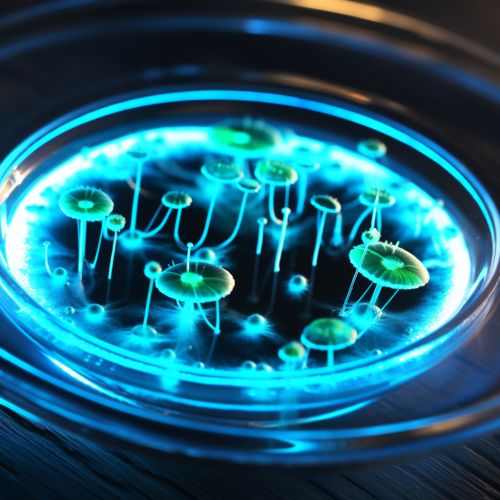Lux Operon
Introduction
The Lux operon is a series of genes that are responsible for the production of light in certain species of bacteria, such as Aliivibrio fischeri. This process, known as bioluminescence, is a fascinating phenomenon that has been the subject of extensive research in the field of molecular biology.


Structure of the Lux Operon
The Lux operon consists of five genes: LuxA, LuxB, LuxC, LuxD, and LuxE. These genes work together to produce the enzyme luciferase, which is responsible for the bioluminescent reaction. The LuxA and LuxB genes encode for the alpha and beta subunits of luciferase, while LuxC, LuxD, and LuxE are involved in the synthesis of the luciferin substrate.
Function of the Lux Operon
The primary function of the Lux operon is to produce light. This is achieved through a chemical reaction that involves the enzyme luciferase and its substrate, luciferin. The reaction is triggered by the presence of oxygen and results in the emission of light. This process is known as bioluminescence.
Regulation of the Lux Operon
The Lux operon is regulated by a process known as quorum sensing. This is a mechanism by which bacteria can communicate with each other and coordinate their behavior based on the density of their population. When the population density of the bacteria reaches a certain threshold, the Lux operon is activated, leading to the production of light.
Applications of the Lux Operon
The Lux operon has been used in various applications in the field of molecular biology. One of the most common uses is in the creation of reporter genes, which are used to study gene expression. The Lux operon has also been used in environmental monitoring, as the light produced by the bacteria can be used as an indicator of the presence of certain pollutants.
